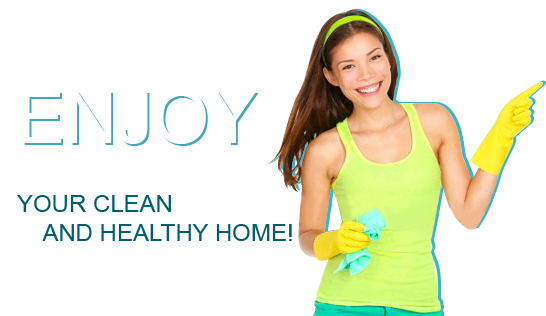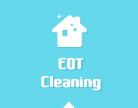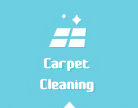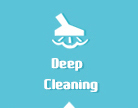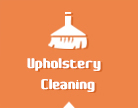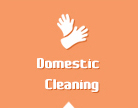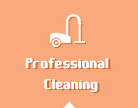We often think that the cleaning products we use are safe. But actually, most of these cleaners are unbelievably toxic. Take your time to find out more about these scariest ingredients hiding in the products, and learn how to replace them with safer alternatives that work just as well. Studies indicate that the average home contains about 62 harmful chemicals. Even though we might not know it, we are exposed to them unceasingly. Substances in cleaning products have been linked to respiratory problems, skin irritations, asthma and many more. Many manufacturers do believe that in small amounts these otherwise detrimental substances cannot occur as a problem to one’s health. However, if exposed to them daily, it is not possible to assess the risks. To reduce the risk, take a look at these toxic ingredients and try to replace them with healthier, safer alternatives.
#1 Sodium Hydroxide
Found in: oven cleaners
Health related problems: Many people do not know it but sodium hydroxide is one of the most corrosive substances. Also known under the name of lye, if somehow it gets in your eye or you accidentally touch it, it can cause severe burns. If somehow you inhale it, this will result in a sore throat that you will not be able to get rid of for days.
Safer choice: You can sanitise and disinfect the dirtiest and greasiest oven with baking soda. It may take you little more efforts but the outcome will be just as fantastic. You can even unclog drains through pouring one part of vinegar and one part of baking soda directly down the drain. When the bubbles are gone, clean the detritus by running hot water.
#2 Chlorine
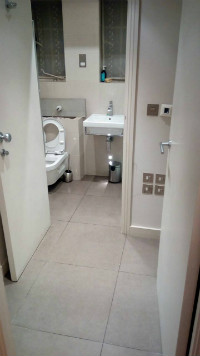
Found in: toilet cleansers, scrubbing powders, laundry whiteners, mould removers
Health related problems: Many health problems may be caused due to chlorine exposure. These risks can be quite acute and chronic.
Safer choice: For scrubbing surfaces, baking soda will get the job done in just as efficient manner.
You can clean the toilet bowls and sinks with white vinegar.
For clothes whitening, you can use borax powder or chlorine-free oxygen bleach powder.
Fortunately, we live in a world where almost every problem has a solution. For reducing your skin’s exposure to chlorine, install water filters both in the shower and on the sinks.
#3 Ammonia
Found in: Cleaners for polishing jewels, taps, sinks and other fixtures
Health related problems: Many glass cleaners contain ammonia because it does not leave any streaks. However, that shine is there for a purpose. Ammonia is extremely powerful ingredient which affects the health immediately. People who suffer from asthma or other breathing problems are affected along with people whose lungs are not at their optimal capacity. Ammonia affects the ability to breathe well. If you are exposed to this substance, you are likely to develop asthma or bronchitis.
Safer choice: Did you know that you can shine any glass or metal surface with vodka? Add toothpaste to the liquid and use the paste to polish silver jewels.
#4 2-Butoxyethanol
Found in: Detergents such as kitchen, glass and all-purpose cleaners
Health related problems: You may not know it, but 2-butoxyethanol can be found in a number of glass cleansers. Actually, it is the ingredient which give them the specific sweetish smell. If inhaled, it can cause severe sore throat. It can also lead to pulmonary edema, kidney damage or narcosis. Providing you with this information is not comforting at all but at least you can take matters into your own hands and make sure to replace the substance with safe ones.
Safer choice: You can clean glass and mirrored surfaces by means of vinegar diluted with water and a towel paper. For cleaning the kitchen area, you are given a number of choices starting with simply using baking soda. You can also make DIY recipes with white vinegar, baking soda and lovely essential oils. Once you find your favourite recipe, you will never go back to using the toxic 2-butoyethanol.
#5 Quarternary Amonnium Compounds
Found in: Many detergents which are labeled as “antibacterial”, fabric softeners
Health related problems: This substance can cause severe skin irritations and respiratory disorders. The bad news is that even robust people can develop breathing problems and asthma if exposed to Quarternary Amonnium Compounds in regular intervals.
Safer choice: What if we tell you that actually you do not need such fabric softener? What if we tell you that you can simply use vinegar? It is good fortune to know that vinegar does not contain toxins and can remove soap residues in the washing cycle with one blow. The added benefit is that it can get rid of static, too. Vinegar is also your hero when it comes to general scrubbing and cleaning. It can remove fresh carpet stains as well. Alternatives for safer cleaning are way too many including tea-tree oil. Take a spray bottle and fill it with water, vinegar and a few drops of the oil. You can use this solution to clean surfaces in a safer manner without putting your health at risk.
#6 Phthalates
Found in: many air fresheners, toilet paper, soaps (used as a fragrance)
Health related problems: The substance is endocrine disruptor.
Safer choice: If possible, go for fragrance-free products. You can use essential oils which are great for refreshing your home. As air fresheners can trigger asthma, think about adding plants to your house as they act as detoxifiers.
#7 Triclosan
Found in: most of the dishwasher detergents and soaps
Health related problems: This ingredient is acute antibacterial substance that helps the development of drug-resistant bacteria.
Safer choice: Instead of triclosan, use safer cleaners and soaps that are organic, and do not use antibacterial detergents with triclosan for house cleaning.



